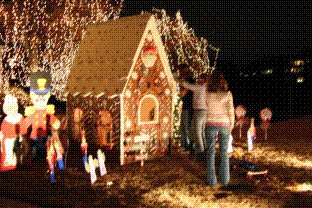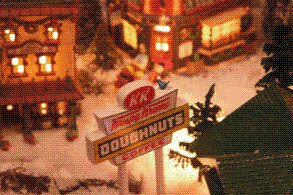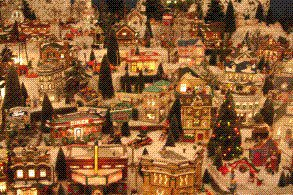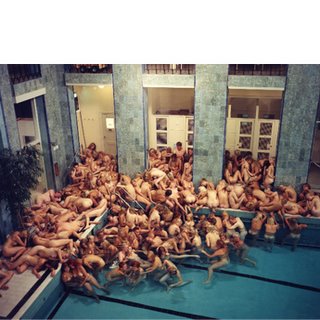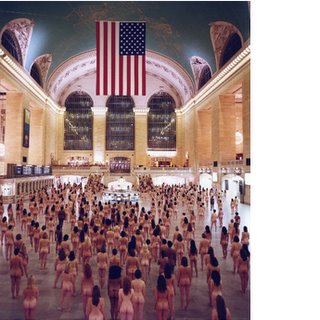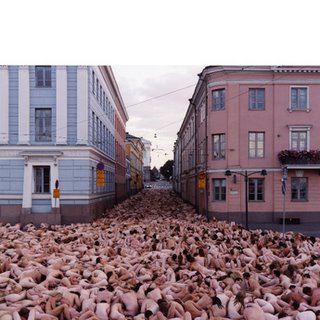Most Americans seem to think the cure for terrorism is to gather our army, navy, air force and marines and launch a massive military assault. That is like trying to stop a flood by shooting guns at the water. It’s simply the wrong tool to use.
Before we talk about what might work, let’s take a look at what doesn’t work and what wouldn’t work and why - so we know which paths to avoid.
Direct Military Force
This is what we are trying to do in Iraq at the moment. The basic plan is this: we send a trained, equipped army into a hot zone where terrorists are attacking, and we try to force them out or capture them and arrest them and take them away to terrorist prison. (Where we have been apparently occasionally guilty of torturing the prisoners)
With this method, we cannot see the enemy clearly. They are not a standing army with an established country or area we can find and overtake. Yet that is what our army is trained and equipped to fight against. Strategically and tactically, an army needs to fight another army; a large, militarized, visible target.
But terrorists do not present that visible target. They hide. They operate covertly in small pockets, and they can effect a huge amount of damage collectively. The American and British forces had no problem overcoming Iraq’s established military at the outset. Iraqi forces were conquered and dispersed within the first few weeks with minimal casualties on the American side.
However, now, in the fight against the terrorist insurgents, we have lost over 2,000 soldiers, and the losses continue almost daily, and there is no real end in sight. Despite our superior numbers and superior technology and superior firepower, we cannot seem to get the upper hand here. All our wins are small and temporary. And there have been many incidences of collateral damage where we have burned innocent citizens to the bone with white phosphor agents during night raids in Fallugah, killed families on either side of our intended missile targets, etc.
As our presence is prolonged and as it hurts more and more civilians, we seem to build more and more resistance. We are not capturing the hearts and minds of Iraqis. Instead, we seem to be alienating them. As we capture or kill 10 terrorists, there are always 12 more to take their place. This seems to be an ongoing battle that we can never win.
Indirect Military Force
In a traditional military direct confrontation, the terrorists have the advantage. They can hide in the mountains, in the villages, among innocent civilians, etc., while our forces are exposed, obvious, and in the line of concealed fire. If you want to level the playing field, we could get nasty. You can choose to fight using their methods. For example, you could analyze their motivations, and use them against them. Let's examine what makes a suicide bomber want to commit suicide:
1) He is fighting what he believes is a holy cause. America is evil and we are all infidels in their eyes, and he is convinced it is his religious moral duty to destroy us.
2) He is young, has not yet built a life he is afraid of losing, so ideology is bigger to him than practical day-to-day necessities.
3) His current life has no joy, no comforts, few chances for employment, poverty, no hopes for the future. So death seems almost a relief for him. A heroic death seems very worthwhile.
4) By performing the suicide bomber mission, he earns $25,000 paid to his family on his death. So they are better off, and he dies a hero in the eyes of his family, his friends, and his countrymen.
5) By doing the suicide bomber mission, he feels he will earn a hero’s reward in heaven. An afterlife of luxury and ease and 72 virgins for his sexual pleasures, etc.
And so the young men (most are teenagers), are going to continue to sign up for duty.
If you wanted to fight fire with fire you could undermine their confidence and remove their incentive to continue doing these things. Although they might be temporarily effective, here are some nasty examples of terrible things that we should NOT do:
1) Kill the families of the suicide bombers. This way the incentive of providing for their families is lost. Also, it turns their families into fugitives that have to run and hide for the rest of their lives. That would eliminate the revered martyred hero aspect of becoming a suicide bomber.
2) Destroy – or threaten to destroy Mecca – the Muslim holy place. The theory here is the same one they used on attacking the Twin Towers in New York. Find a place the enemy values – something at the heart of what they care about and destroy it. Individuals may be willing to give their lives to a military cause, but the threat of this alone might be a huge disincentive for them to do anything that threatens America, and therefore threatens the heart of the holy state of Islam.
3) Launch a nuclear attack and level the entire cities where a large degree of terrorism abides, and a way to neutralize the immediate threat and serve as a deterrent to other potential terrorists. It's amazing how many people think this is a viable alternative.
4) Gather up the remains of suicide bombers and bury them wrapped inside a pig or hog's skin. This would cause them to think they will not go to heaven and will not collect their rewards in the afterlife.
The problems with taking these approaches is that,
1) They are immoral, and against our ideas of what is right and wrong.
2) They reduce us to the level of terrorists ourselves, and we would deserve whatever punishment would be meted out to us after that.
3) It would make the entire Muslim world rise up against us – if not the entire world. We could not possibly win against the whole world. We are 300 million people against a planet of 6 billion people. We would be utterly destroyed. And frankly, we would have become so evil by those deeds that we would probably deserve it.
4) The effects of controlling their aggression would only be temporary at best.
5) It would probably serve to escalate covert acts of terrorism here in the US.
6) To give any degree of security to Americans at home, the government would have to turn the entire country into virtually a prison, with guards all along the coastlines and borders, and military checkpoints everywhere on all the major roads and railways, etc.
So we can’t effective use either direct or indirect military force to win out against terrorism. Both these approaches are ineffective and take us in the wrong direction.
So, What Might Work?
Before we can defeat terrorism, we must define it.
I think of terrorism as a disease. It's a disease of civilization, and it arises from problems of inequity and lack of communication and lack of political will to bring justice and fairness to everyone.
Where you have some group that feels completely disenfranchised, and without the hope of reprieve, you have the emotional fuel for terrorism. When they finally have access to weapons, that is the spark that ignites the flame.
Terrorism is desperate, but it is not insane. There is method in the seeming madness of their actions. This is not the nonsensical ravings of a lunatic, these acts are the calculated actions of desperate people who feel they have no other choice. No other means to have their story heard and their plight improved. Terrorism is a disease, and so it must be treated and cured.
And treating the symptoms will not cure it, we must act upon the underlying causes.
I think it is futile to try to police and control a large group of people that truly and seriously want to destroy you so badly that they are willing to sacrifice their own lives in order to achieve that goal. Even if it is within our power to control them temporarily, it only means they will bide their time until they build up their strength enough to overcome us.
And have no doubt about it - we CANNOT stay there and fight this war indefinitely. As of today, the cost of the war in Iraq is $225,132,197,484 and counting higher by the second. Here is a website that actually shows the running cost of the war in real-time:
http://nationalpriorities.org/index.php?option=com_wrapper&Itemid=182
This has already gone far beyond our comfort level, and our resolve as a country has already eroded to the point where only 30% of the population are in favor of staying and that is dropping daily.
At this rate we will have to abandon efforts there before too long, or it will completely bankrupt the country. The only thing keeping us afloat right now is the injection of large doses of cash from China, Korea, and Japan to levels over 2 billion dollars every single day. And they are complaining they are losing out on that investment, and so will not continue that subsidy indefinitely either.
And so the answer is NOT to try to control the terrorists militarily, but rather look at their fundamental motivations and work at that level.
What makes the Muslim world hate America, and how can we change that?
Well, for one thing, they see us as an arrogant, power-mad, greedy nation that survives by exploiting and abusing those people with less power. Specifically: them.
How can we change this perception?
Well, let’s look at recent history. Think back to the tsunami last year. The countries in southeast Asia like Indonesia, etc. suffered the most. They happen to be the largest Muslim population in the world. They have many times the population of places like Afghanistan, Iran, Iraq, etc.. As it happened, Australia gave 800 million dollars in aid to the Tsunami victims. They are a small nation of 20 million people. America gave less than 5% of that amount even though we are 1500% larger and we are the wealthiest nation in the world.
What if, instead of spending over 1 billion dollars per week on the war in Iraq, we instead spent a fraction of that amount on helping out Muslim countries that are struggling with major disasters, etc.?
If we became the friend of Muslims the world over instead of the enemy, then how would the terrorist leaders muster the will of the people to fight us and give their lives doing so? They would find it hard to get enthusiastic recruits to sacrifice their lives fighting a country that helps them and their people and saves their lives through humanitarian acts. How could they continue the perception of us as evil if we are doing so much good.
If we re-tooled our military machine into a helping force rather than a fighting force, we might just be able to build enough good will around the world to undermine the methods of our enemies to find a fighting force that opposes us at every opportunity.
And we would be moral, just, and deserving of a place at the table as true leaders of the world. And isn’t that what we like to think of ourselves as now? Isn’t that who we thought we were? Isn’t that where we want to be?
Couldn’t we just be the good guys again?
Possible Arguments and Questions:
Q: That’s too simple. And it’s an oversimplification of the problem. How could something so simple work?
A: Because simple answers work best. They are the easiest to communicate. They are the easiest to accept. And it is not an oversimplification of the fundamental problem. They hate us because of how they view us. They view us that way because of our policies and our actions. If we change those self-serving policies and actions to benefit them, then that will undermine the platform of hatred against us. They will stop looking for ways to harm us, and instead welcome us. Eventually. It will of course take some time and some gestures of goodwill on our part to engender that trust.
Q: But we need wars to stimulate our economy – to get us out of our recessions each decade, we need a major war.
A: The only reason a war brings us out of a recession each decade is because of the enhanced government spending. We pay taxes into a government pool which is used to fuel tremendous government spending in times of war. They buy weapons, but also vehicles, fuel, food, building materials, software, computers, technology of all kinds in every field, etc.
If we change over to a helping force rather than a fighting force, we could spend the same money to enhance the economy, but in different areas. Subtract the fighter jets, nuclear subs and bombs, and instead add power substations, cell phone networks, clean water facilities, food, transportation, communications facilities, schools, building materials, healthcare medicines and other needed supplies, etc.
The government can still stimulate the economy by spending, but instead of the military-industrial complex, it is other industries. But they all hire people and provide jobs. The employment and lifestyles improve and it radiates out to the rest of the economy in waves. And we get the added bonus that once they are on their feet again, they have had a sample of our goods and our lifestyle, and so now they become customers of our companies, thereby increasing our recovery again through new business and exports.
Q: But we would end up giving away too much money in aid and that hurts our economy.
A: No. We are ‘giving away’ too much money right now on war. It’s costing a horrendous amount of money, and we receive nothing back for it. The spoils of war are never equal to the cost anymore. We don’t need the real estate. With giving aid, it’s dramatically cheaper than war, it builds goodwill throughout the world, undermines the case for terrorism against us, and promotes future business with the countries we help. It leverages our investment in so many ways - all of them good!
War could never give us such a good return on our dollars!



